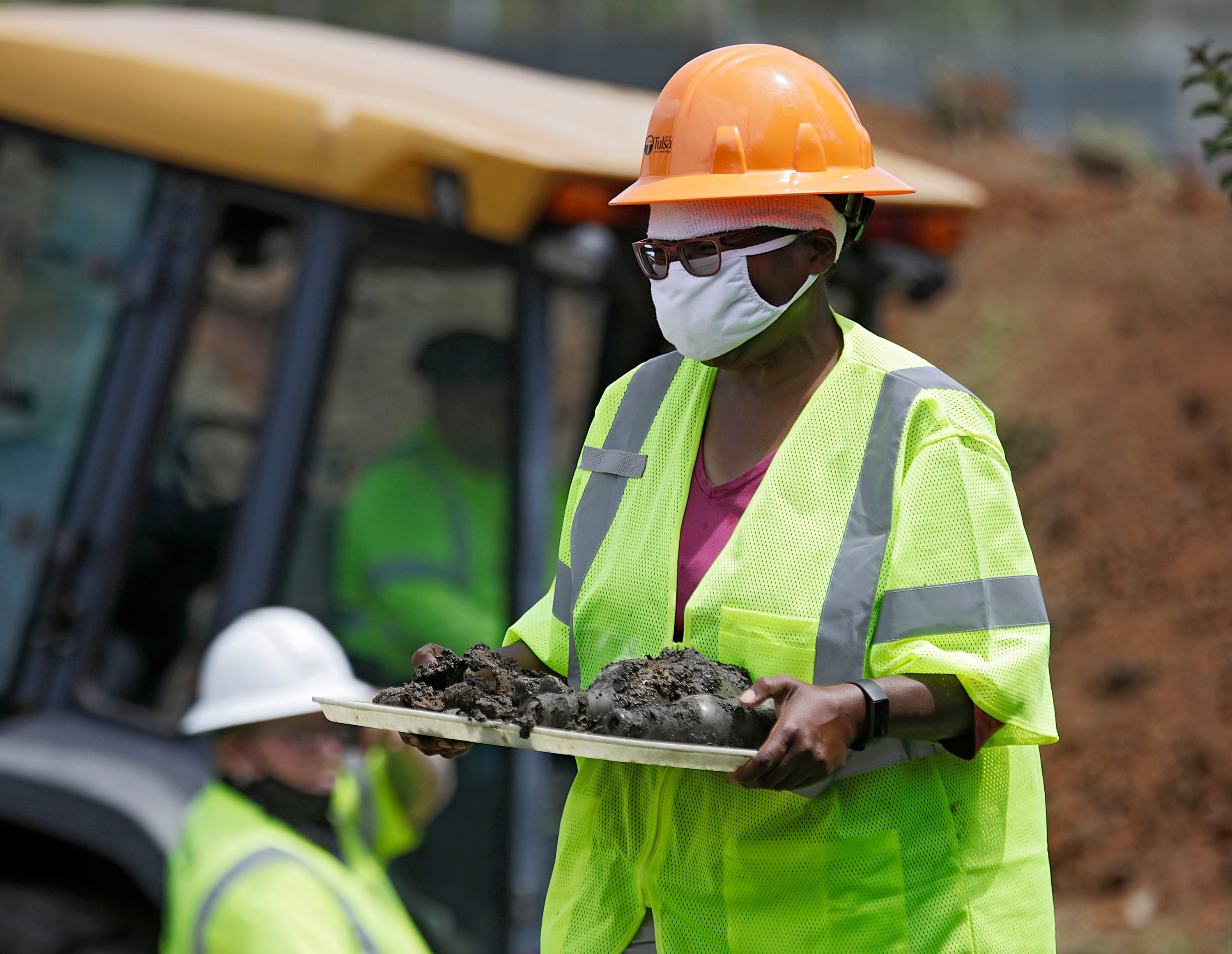Excavation resumes for victims of 1921 Tulsa race massacre that saw hundreds of African Americans killed
Excavation work is underway at two locations in a Tulsa cemetery for victims of a race massacre nearly 100 years ago

Your support helps us to tell the story
From reproductive rights to climate change to Big Tech, The Independent is on the ground when the story is developing. Whether it's investigating the financials of Elon Musk's pro-Trump PAC or producing our latest documentary, 'The A Word', which shines a light on the American women fighting for reproductive rights, we know how important it is to parse out the facts from the messaging.
At such a critical moment in US history, we need reporters on the ground. Your donation allows us to keep sending journalists to speak to both sides of the story.
The Independent is trusted by Americans across the entire political spectrum. And unlike many other quality news outlets, we choose not to lock Americans out of our reporting and analysis with paywalls. We believe quality journalism should be available to everyone, paid for by those who can afford it.
Your support makes all the difference.Excavation work began Monday at two locations in a Tulsa cemetery for victims of a race massacre nearly 100 years ago that left hundreds dead and decimated an area that was once a cultural and economic mecca for African Americans.
Researchers took a core soil sample at one location to give them a better idea of what lies beneath the soil, said Oklahoma State Archeologist Kary Stackelbeck.
“That will help narrow the focus for the heavier machinery," Stackelbeck added.
Both areas of interests are in Oaklawn Cemetery in north Tulsa, where a search for remains of victims ended without success in July, and near the Greenwood District where the massacre happened.
Stackelbeck noted that researchers have a “high level of confidence" some remains will be found in an area known as the Original 18, where old funeral home records indicate up to 18 Black people who were massacre victims were buried.
The latest search is expected to continue for the rest of the week, Stackelbeck said.
If bodies are discovered, researchers will try to determine if there are signs of trauma that could indicate they were massacre victims, said Phoebe Stubblefield, a forensic anthropologist at the University of Florida who is assisting in the search effort.
Attempts would also be made to identify the remains and any possible descendants, according to Stubblefield.
The violence took place on May 31 and June 1 in 1921, when a white mob attacked Tulsa’s Black Wall Street, killing an estimated 300 people and wounding 800 more while robbing and burning businesses, homes and churches.
The massacre — which happened two years after what is known as the “Red Summer,” when hundreds of African Americans died at the hands of white mobs in violence around the U.S. —- has been depicted in recent HBO shows “Watchmen” and “Lovecraft County.”